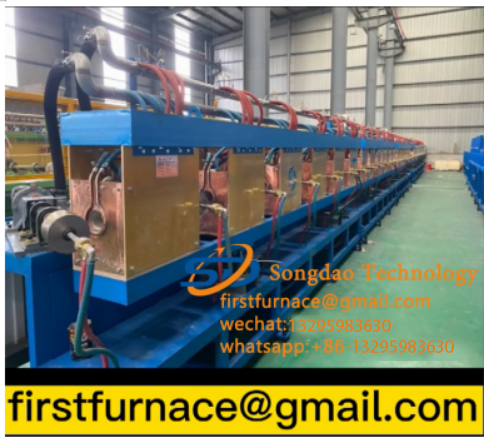- 20
- Dec
ما هي المعالجة الحرارية تصلب التعريفي؟
ما هي المعالجة الحرارية تصلب التعريفي؟
1. المبادئ الأساسية
تصلب التعريفي هو استخدام مبدأ الحث الكهرومغناطيسي لوضع قطعة العمل في ملف تحريضي مصنوع من أنبوب نحاسي. عند تطبيق التيار المتردد على ملف الحث ، سيتم إنشاء مجال مغناطيسي متناوب له نفس تردد التيار الداخلي داخل وحول الملف. إذا تم وضع قطعة العمل في مجال مغناطيسي ، يتم إنشاء تيار مستحث داخل قطعة العمل (موصل) ، ويتم تسخين قطعة العمل بسبب المقاومة. بسبب “تأثير الجلد” للتيار المتردد ، فإن كثافة التيار بالقرب من سطح قطعة العمل هي الأكبر ، بينما التيار في قلب قطعة العمل يكاد يكون صفرًا. يمكن أن تصل درجة حرارة سطح قطعة العمل إلى 800-1000 درجة مئوية في غضون بضع ثوانٍ ، بينما لا يزال اللب قريبًا من درجة حرارة الغرفة. عندما ترتفع درجة حرارة السطح إلى درجة حرارة التبريد ، قم برش التبريد على الفور لإخماد سطح قطعة العمل.
2. Features of induction heating
A. Because the induction heating is extremely fast and the degree of overheating is large, the critical point of the steel is increased, so the induction quenching temperature (workpiece surface temperature) is higher than the general quenching temperature.
بسبب التسخين بالحث السريع ، فإن بلورات الأوستينيت ليست سهلة النمو. بعد التسقية ، يتم الحصول على هيكل مارتينسيت كريبتوكريستالين دقيق للغاية ، مما يجعل صلابة سطح قطعة الشغل 2-3HRC أعلى من تلك الخاصة بالتبريد العادي ، كما تم تحسين مقاومة التآكل.
C. After surface quenching, the volume of martensite in the hardened layer is larger than the original structure, so there is a large residual stress in the surface layer, which can significantly improve the bending resistance and fatigue strength of the parts. Small size parts can be increased by 2-3 times, large size parts can be increased by 20%-30%.
D. Because the induction heating speed is fast and the time is short, there is no oxidation or decarburization after quenching, and the deformation of the workpiece is also very small. After induction hardening, in order to reduce the quenching stress and reduce brittleness, low temperature tempering at 170-200 degrees Celsius is required. Larger workpieces can also be self-tempered using the residual heat of the quenched workpiece.

